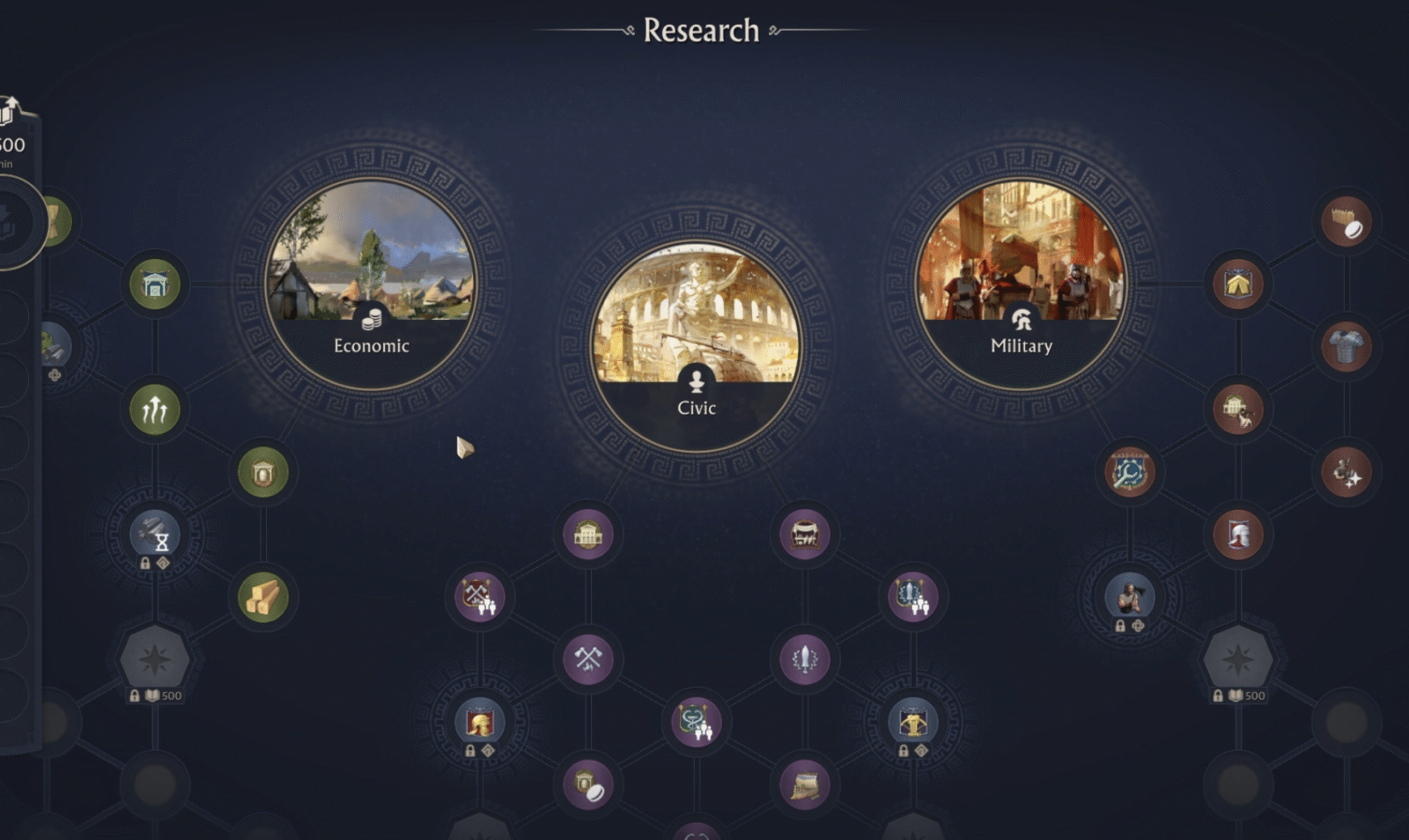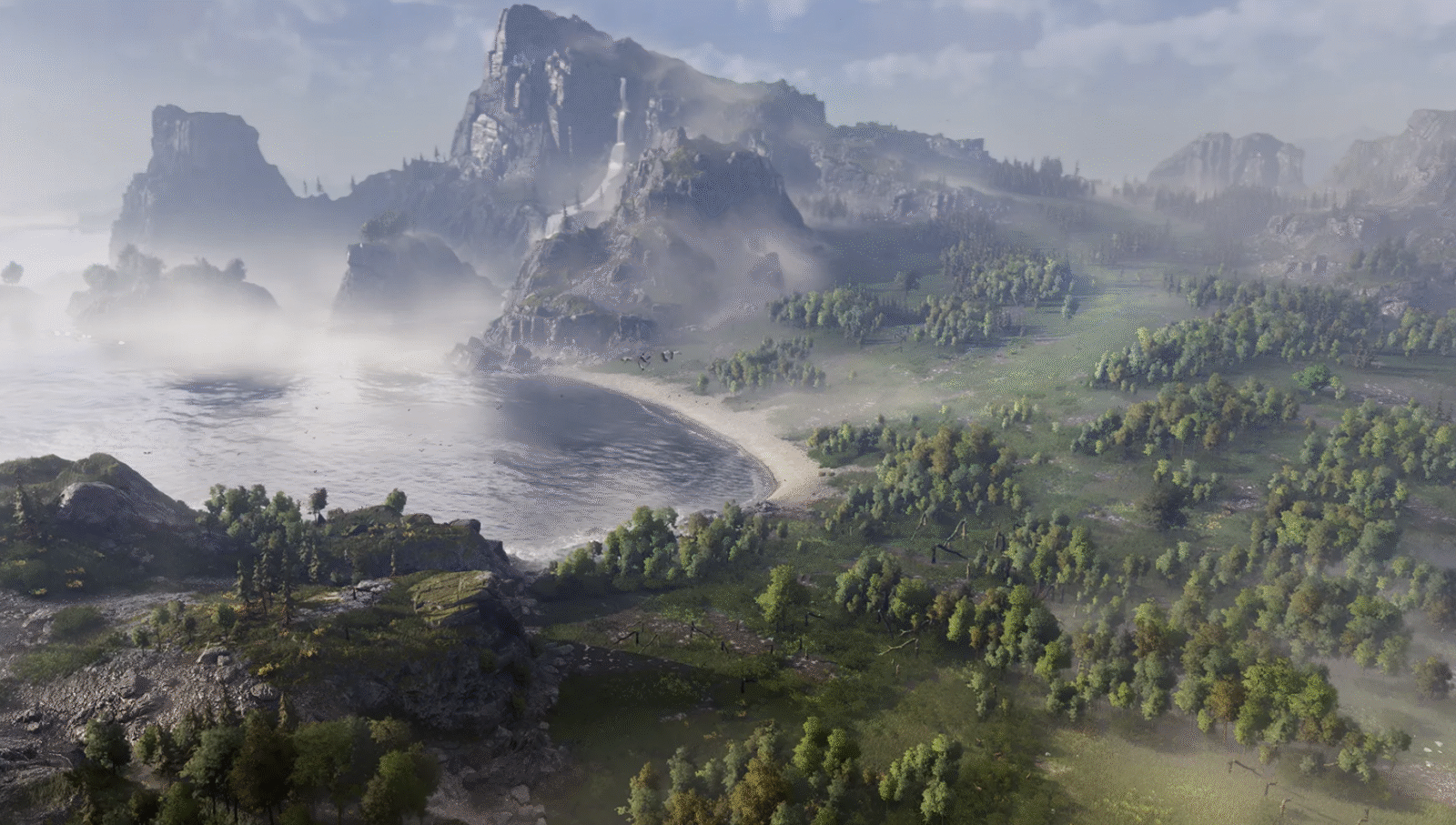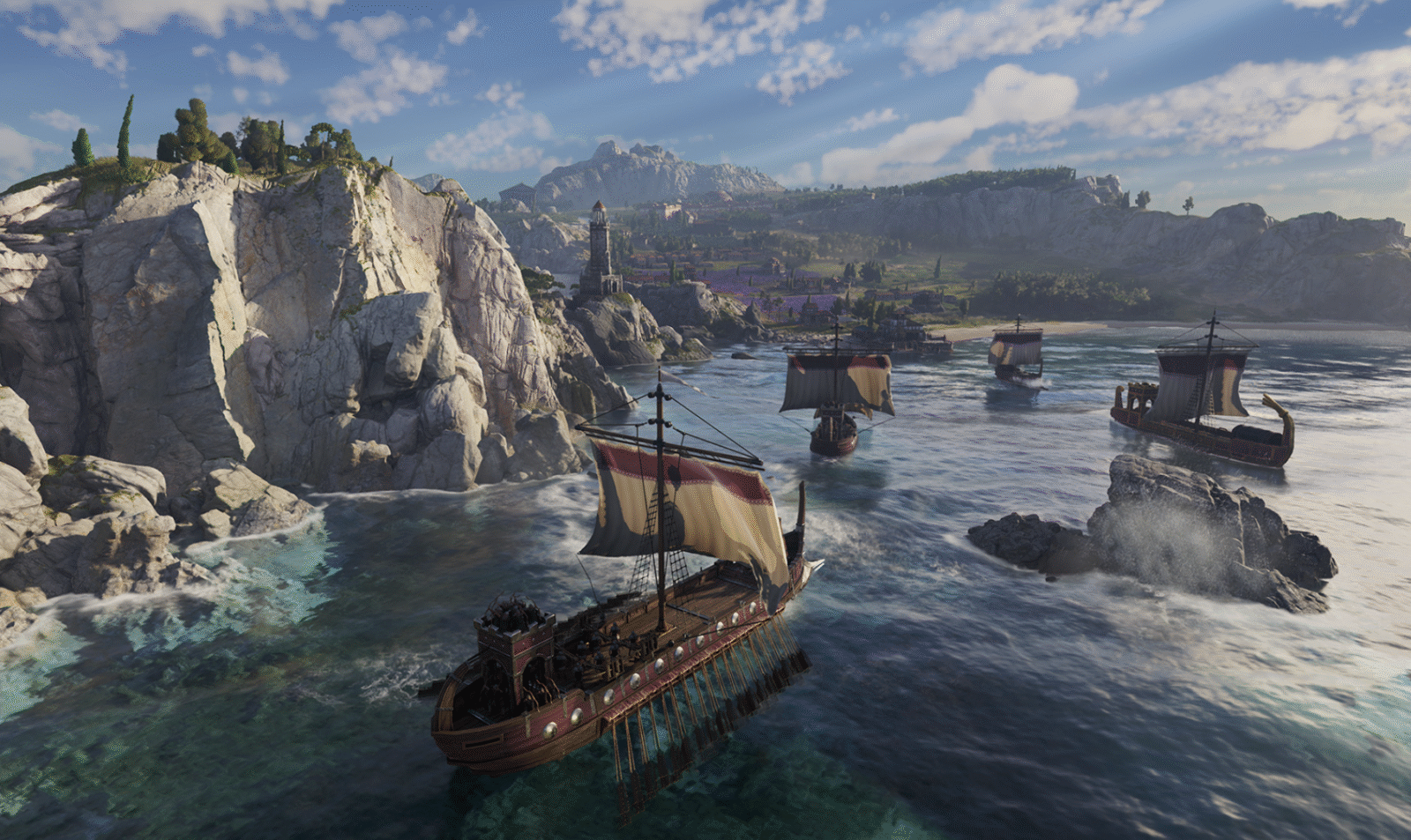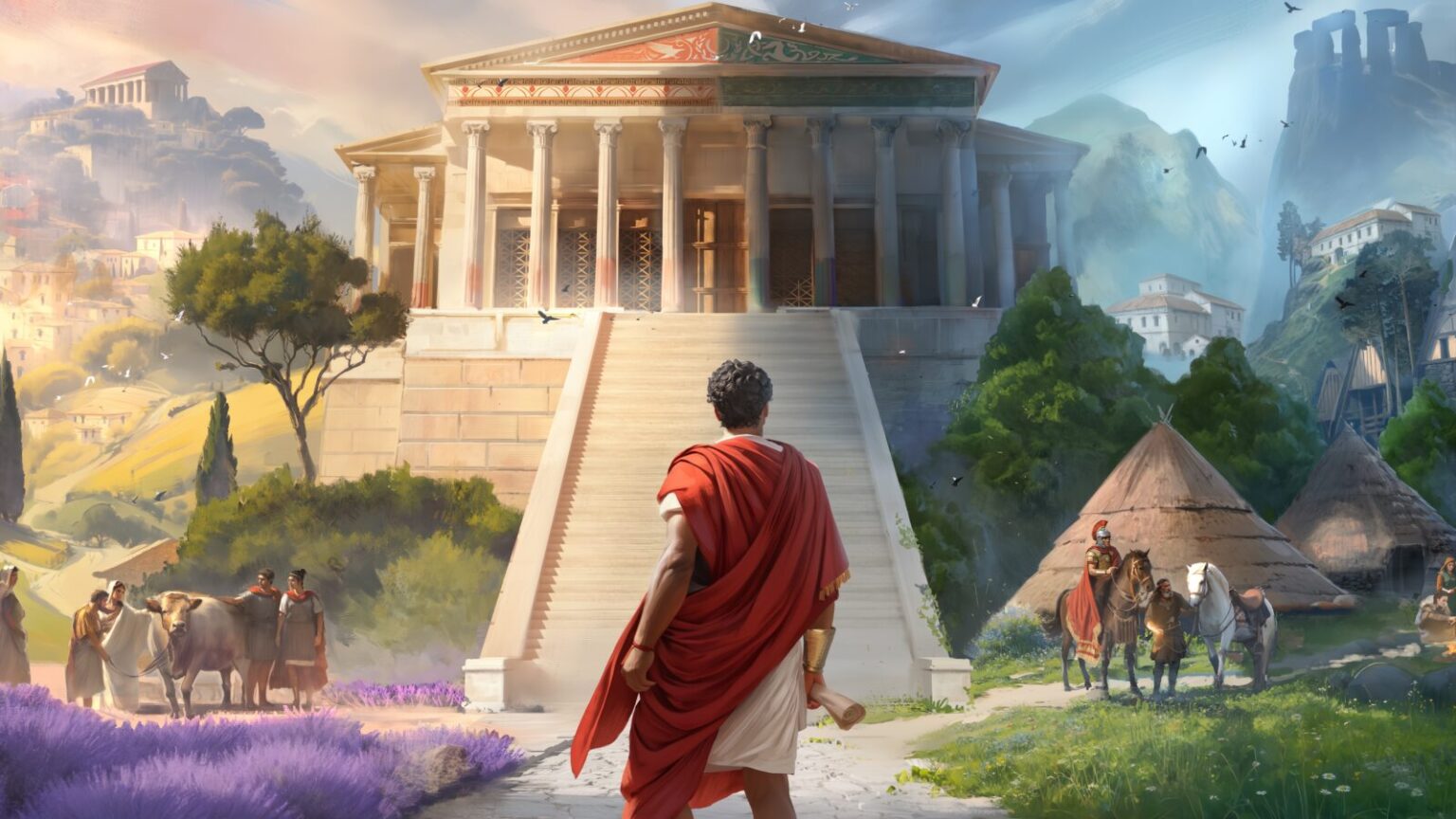TL;DR: A gorgeous, strategic city-builder that makes you feel like Caesar with a clipboard. Occasionally clunky, but endlessly satisfying.
Anno 117: Pax Romana
There’s a moment in every city-building game when the illusion of control starts to slip. Maybe it’s when a fire breaks out right next to the warehouse storing all your timber, or when the economy you thought was humming along suddenly implodes because you forgot that your citizens actually need food. In Anno 117: Pax Romana, that moment doesn’t take long to arrive. Ubisoft calls it a story of peace—Pax Romana, after all—but I spent more time putting out fires, silencing riots, and appeasing angry Celts than enjoying any tranquility. Still, as I sat back watching my marble-laden cities stretch across the coastline like Roman fever dreams, I realized that this is exactly the kind of chaos I wanted.
I came. I saw. I micromanaged.
The first hour of Anno 117 feels like a warm bath for history nerds. The Latium region—all sun-bleached columns, terracotta roofs, and olive groves—feels plucked from the mind of a Roman architect with a penchant for symmetry. Every time I placed a villa, I half-expected Cicero to pop up and complain about zoning laws. Yet beneath this classical beauty lies a ticking machine that never really stops humming.
I’ve played a lot of city-builders in my life—Banished, Cities: Skylines, Tropico, Pharaoh (which, if you know, you know). But Anno 117 is a peculiar beast. It’s not just about the pretty skyline; it’s about the delicate ecosystem of people, goods, and gods. It’s about deciding whether you want your citizens to live next to the garum factory (spoiler: they do not), and learning the hard way that soap is the Roman equivalent of a diplomatic treaty.
Ubisoft’s design philosophy here seems to be: give the player everything they need, but make them work for understanding it. The campaign introduces its mechanics through a story that’s surprisingly engaging—a mix of Roman intrigue, Celtic resistance, and bureaucratic drama. When I first booted it up, I expected a glorified tutorial. What I got instead was a full-blown political saga complete with treacherous senators and power-hungry chieftains. I wasn’t just building cities; I was building empires of influence.

The old saying goes that Anno games are easy to learn and hard to master. Anno 117 tweaks that slightly: it’s easy to use, hard to rule. The interface is clean and logical—everything you need, from houses to temples, lives in one giant construction menu. Resources chain neatly together, and a well-designed stats screen tells you exactly where your economy is about to implode. Once I got used to its logic, I realized I could stop fighting the UI and start fighting the inevitable entropy of empire.
But let me be honest: that first learning curve was brutal. The production lines baffled me (why do I need to select the endproduct to see what’s required?), and the governance stats looked like they were written in Latin. Yet something clicked after a few hours. Suddenly, I wasn’t lost in the menus—I was orchestrating them. I had become my own urban deity, rearranging buildings with the precision of a Roman engineer.
That sense of control is only possible because of three small but divine interventions from Ubisoft: the relocate tool, the copy tool, and shared warehouse inventories. The relocate tool is self-explanatory—and life-changing. I could pick up and move buildings freely, which meant redesigning a city wasn’t a punishment. The copy tool, meanwhile, is the greatest invention since aqueducts. I could highlight an entire neighborhood, duplicate it, and paste it somewhere else. Boom: instant suburb. And the shared warehouse inventory? That’s pure genius. No more clustering production chains awkwardly; my empire could finally breathe.
Where Anno 117 truly shines is in the way it connects beauty and utility. Every decision has a ripple effect, sometimes quite literally. Lavender fields make your citizens happier (+1 happiness), garum factories make them miserable (-2 happiness), and soap keeps them healthy (+1 health). The area effects feel grounded in a sort of historical realism—after all, no one in their right mind wanted to live next to a garum producer in real life. Ubisoft even modeled the way smells spread: odors radiate in circles, while services travel along road networks. It’s the kind of detail that feels simultaneously absurd and brilliant.

Then there are the specialists—individuals you can assign to buildings to tweak their influence radius or production efficiency. It adds a layer of personality to an otherwise mechanical system. One specialist might turn your tavern into a den of joy; another might make your barracks the envy of Gaul. I found myself playing favorites, developing an emotional attachment to these pixelated administrators who had no idea I was micromanaging their entire existence.
For all its mechanical polish, Anno 117 stumbles on presentation. The UI, a bland collection of white-on-blue icons, feels like it was designed by an accountant rather than a Roman artisan. There are no elegant flourishes, no marble motifs—just sterile efficiency. It’s the one place where the game feels less like ancient Rome and more like a tax form.
But when you step away from the menus and into the world, it’s breathtaking. The Latium region glows with warm sunlight; its cities are alive with chatter, trade, and movement. Every street corner tells a story. The little details—plebeians wearing better clothes than the freedmen, the distinctive watchtowers, the white carrots instead of orange—speak of real historical care. Ubisoft may have fudged the geography (Rome wasn’t exactly an island archipelago), but they nailed the atmosphere.
If there’s one thing I wish they’d done differently, it’s bread. Yes, bread. The famous Roman panis quadratus traditionally came in eight segments. Here, it’s four. Ubisoft, if you’re reading this: fix your bread.
One of the pleasures of city-builders is voyeurism. I could spend hours just watching my citizens go about their business—carrying bundles of lavender, stacking amphorae, mixing soap. The animations are delightful in their repetition. Sure, they loop, and yes, the farmers seem to have an irrational fear of actually entering their fields, but the overall illusion works. Zoom out, and it all becomes a living diorama. Zoom in, and you start to see the seams. It’s not a perfect simulation of life in 117 AD, but it’s close enough to make you believe.
The only time the illusion falters is in the grid. Every Roman town is built on rectangles, which works fine for Latium’s disciplined geometry. But when I crossed into Albion—the Celtic region with its rolling marshes and irregular terrain—that grid became a curse. Roads can curve now, technically, but they do so like a Lego snake: a series of straight lines pretending to bend. I wanted winding paths, but I got jagged edges. The Celtic towns end up looking more like Roman suburbs than druidic villages.

Worse still, the variety in architecture dips. Latium’s villas have seven variants; Albion’s huts have four. That might not sound like a big deal, but after spending hours sculpting my Celtic settlement, I couldn’t unsee the copy-paste repetition. Latium looks like a postcard; Albion looks like a spreadsheet.
But what Albion lacks in aesthetics, it makes up for in politics. The campaign’s second act introduces the tension between the occupying Romans and the rebellious Celts, and it’s glorious. Every decision has weight. Romanize too aggressively, and the locals revolt. Side with the Celts, and Rome sends an army. There’s no true peace—only the illusion of stability.
And so, inevitably, I built walls.
I raised barracks, trained legionaries, and prepared for the inevitable betrayal. Warfare in Anno 117 is streamlined but satisfying. You command units, issue attack and defense orders, and can experiment with tactics that feel surprisingly deep for a city-builder. Cavalry flanks, archers cover, infantry holds the line. The game even lets you channel your inner Caesar—I built a double wall once, in imitation of the Battle of Alesia, before promptly running out of wood. Authenticity!
The only missing piece is formation control. Roman discipline is legendary, but here your troops mostly clump together like they’re at a toga party. It works, but it doesn’t feel Roman. Still, the mix of ground and naval warfare keeps things dynamic. Shipbuilding in particular is a joy—each vessel customizable in speed, armor, and attack type. When your triremes sail out at dawn, soldiers visible on deck, it feels like a scene from Total War: Rome II filtered through a gentler, more deliberate lens.
Religion exists in Anno 117 mostly as a background system—choose a god for some buffs, host festivals, and move on. I picked a deity, forgot about it, and hours later discovered my citizens had converted on their own. Divine intervention by way of passive gameplay. It’s charming, if shallow. Diplomacy suffers a similar fate. Outside the campaign, you can form alliances and declare wars, but rival leaders behave predictably. It’s serviceable, not thrilling.

But that’s okay. Anno 117 doesn’t want to be Crusader Kings. Its focus is on rhythm—the ebb and flow of production, expansion, and crisis. Once you accept that, it becomes almost meditative. Even the chaos of rebellion or fire becomes part of the larger symphony. I started to see my cities less as static constructions and more as living organisms—breathing, consuming, evolving. When a riot broke out, it wasn’t a failure; it was feedback. The empire, like all empires, was speaking.
Ubisoft has made no secret that Anno 117 is not meant to be historically accurate. This is Rome as an aesthetic, not an archive. The seven hills have been replaced by seven islands; the gods are simplified; the bread is wrong. And yet, the spirit feels right. The game captures the tension between order and chaos that defined the Roman world. Every time I expanded a district, I felt the same push-pull of ambition and instability that must have haunted Roman governors. The Pax Romana wasn’t peace; it was just a pause between wars.
The same is true here. The moment you feel secure, the game throws a wrench. Production falters, citizens riot, pirates attack. It’s not malicious—it’s systemic. Peace, it turns out, is just maintenance.
After spending dozens of hours in Anno 117: Pax Romana, I realized that the game isn’t really about Rome at all. It’s about the modern obsession with optimization. Every system begs to be balanced, every metric begs to be improved. It scratches the same itch as checking your phone’s battery percentage or rearranging icons on a desktop. But underneath that, there’s a weird serenity. Watching your city thrive is like meditating on spreadsheets.

And yet, sometimes I wish the game embraced imperfection more boldly. I wanted mud, not marble. I wanted Celtic roads that refused the grid, citizens who resisted my godlike efficiency. The campaign hints at that philosophical tension—the Celts versus the Romans, nature versus control—but the systems themselves still privilege order. Even rebellion feels tidy.
Still, I can’t stop playing. Every time I finish a city, I promise myself I’m done, and then I remember there’s a new island to settle, a new trade route to optimize. The Roman Empire may have fallen, but my digital one endures—rebuilt, renamed, relocated with a single click.
The Verdict
Anno 117: Pax Romana is not just another entry in Ubisoft’s long-running series; it’s a love letter to systems thinking wrapped in a toga. It captures the grandeur of Rome and the meticulous joy of city-building while cutting away most of the genre’s unnecessary clutter. Its UI might be dull, its diplomacy shallow, and its grids occasionally rigid, but none of that stops it from being one of the most enjoyable strategy experiences I’ve had in years.
If Cities: Skylines is modern chaos and Banished is rustic despair, Anno 117 is classical control. It’s the fantasy of empire distilled into mechanics. You’re not just building cities; you’re building meaning out of motion.







